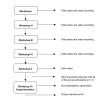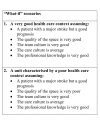Using system dynamics for collaborative design: a case study
- PMID: 17683519
- PMCID: PMC1965472
- DOI: 10.1186/1472-6963-7-123
Using system dynamics for collaborative design: a case study
Abstract
Background: In order to facilitate the collaborative design, system dynamics (SD) with a group modelling approach was used in the early stages of planning a new stroke unit. During six workshops a SD model was created in a multiprofessional group.
Aim: To explore to which extent and how the use of system dynamics contributed to the collaborative design process.
Method: A case study was conducted using several data sources.
Results: SD supported a collaborative design, by facilitating an explicit description of stroke care process, a dialogue and a joint understanding. The construction of the model obliged the group to conceptualise the stroke care and experimentation with the model gave the opportunity to reflect on care.
Conclusion: SD facilitated the collaborative design process and should be integrated in the early stages of the design process as a quality improvement tool.
Figures





References
-
- Sloan-Devlin A, Arneill AB. Health care environments and patient outcomes: a review of the literature. Environment and behavior. 2003;35:665–94. doi: 10.1177/0013916503255102. - DOI
-
- Ulrich R, Zimring C. The Role of the Physical Environment in the Hospital of the 21st Century: A Once-in-a-Lifetime Opportunity. Center for Health Systems and Design, College of Architecture, Texas A & M and College of Architecture, Georgia Institute of Technology. 2004.
Publication types
MeSH terms
LinkOut - more resources
Full Text Sources
Medical

